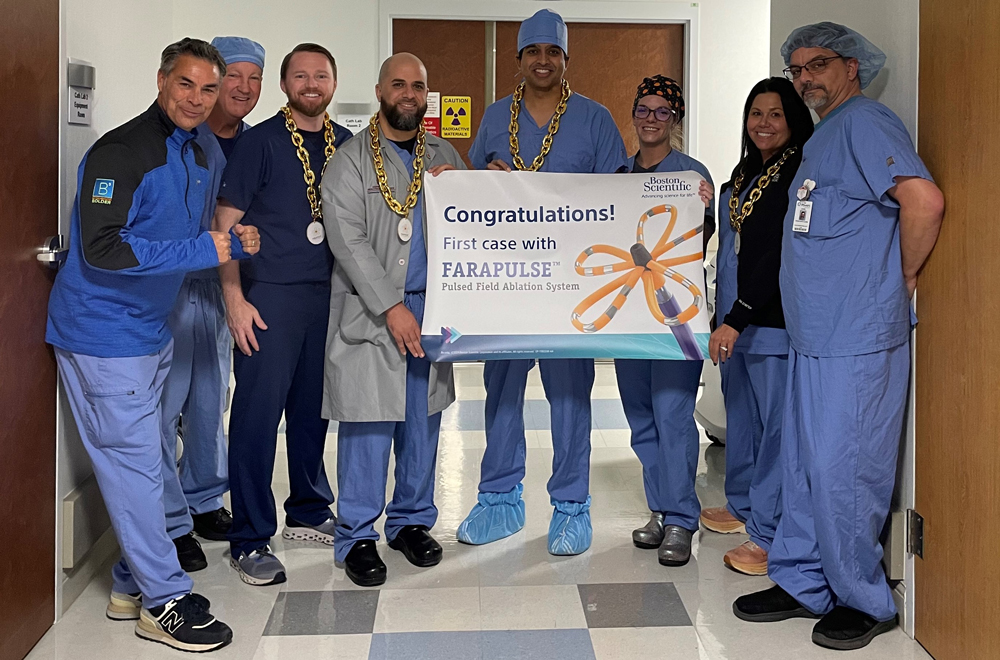
Robert “Bob” Helvie of Valparaiso says one of the things he was looking forward to this year was holding his newest great-granddaughter when she was born the second week of January. He knows he might not have made it to that day without his cardiologists.
“Every doctor who has helped me has been in the right place at the right time,” says Helvie, who is 80. “I had three bypasses at the Cleveland Clinic around 1988 when I lived in the Fort Wayne area. Years later, in 2002, after checking me out again, doctors informed me that my heart needed six more bypasses. I had those done here in Northwest Indiana. I was referred by my cardiologist of the past 18 years, Akram Kholoki, MD.”
Kholoki, a Community Care Network physician with an office in Valparaiso, is on staff at St. Mary Medical Center in Hobart and Community Hospital in Munster. The physician implanted a stent in Helvie’s heart a couple of years ago. That was not enough to keep his very active, still working patient from his cardiologist’s office.
“I was having trouble breathing,” Helvie says. “I couldn’t walk up a flight of stairs without being out of breath. I know that’s not normal. After a few tests, Dr. Kholoki told me I needed my aortic valve replaced. That’s when he sent me over to see Dr. Abbas in Munster. The rest is history.”
Community Healthcare System’s team of specialists at the Structural Heart & Valve Center are mending hearts and saving lives with transcatheter aortic valve replacement, or TAVR. A less invasive procedure than open-heart surgery, TAVR gives hope to patients like Helvie, who suffer from severe heart disease but are not ideal candidates for a complex open heart surgery.
“The hospitals of Community Healthcare System have a well-established history of providing excellence in cardiac care from routine screenings to complex treatments,” says Samer Abbas, MD, medical director of Cardiovascular Services at Community Hospital. “That is why we are uniquely positioned to spearhead programs such as TAVR that benefit the entire Northwest Indiana community. We completed the first TAVR procedure here in January 2017. Since then, we have performed more than 300 successful procedures, averaging three cases per week. More than 60 per-cent of those patients return home the following day.”
TAVR does not require the patient to be placed on a bypass machine to breathe. Instead, under sedation, a catheter is inserted either into the arm or the groin and threaded through an artery to the heart to deliver the replacement valve. The original damaged aortic valve is left in place. Once the new valve is set in position and expanded, it pushes the original valve leaflets out of the way and the tissue in the replacement valve takes over the job of regulating blood flow.
For more information on the Structural Heart & Valve Center, call 219-703-5301 or visit COMHS.org/heart.


